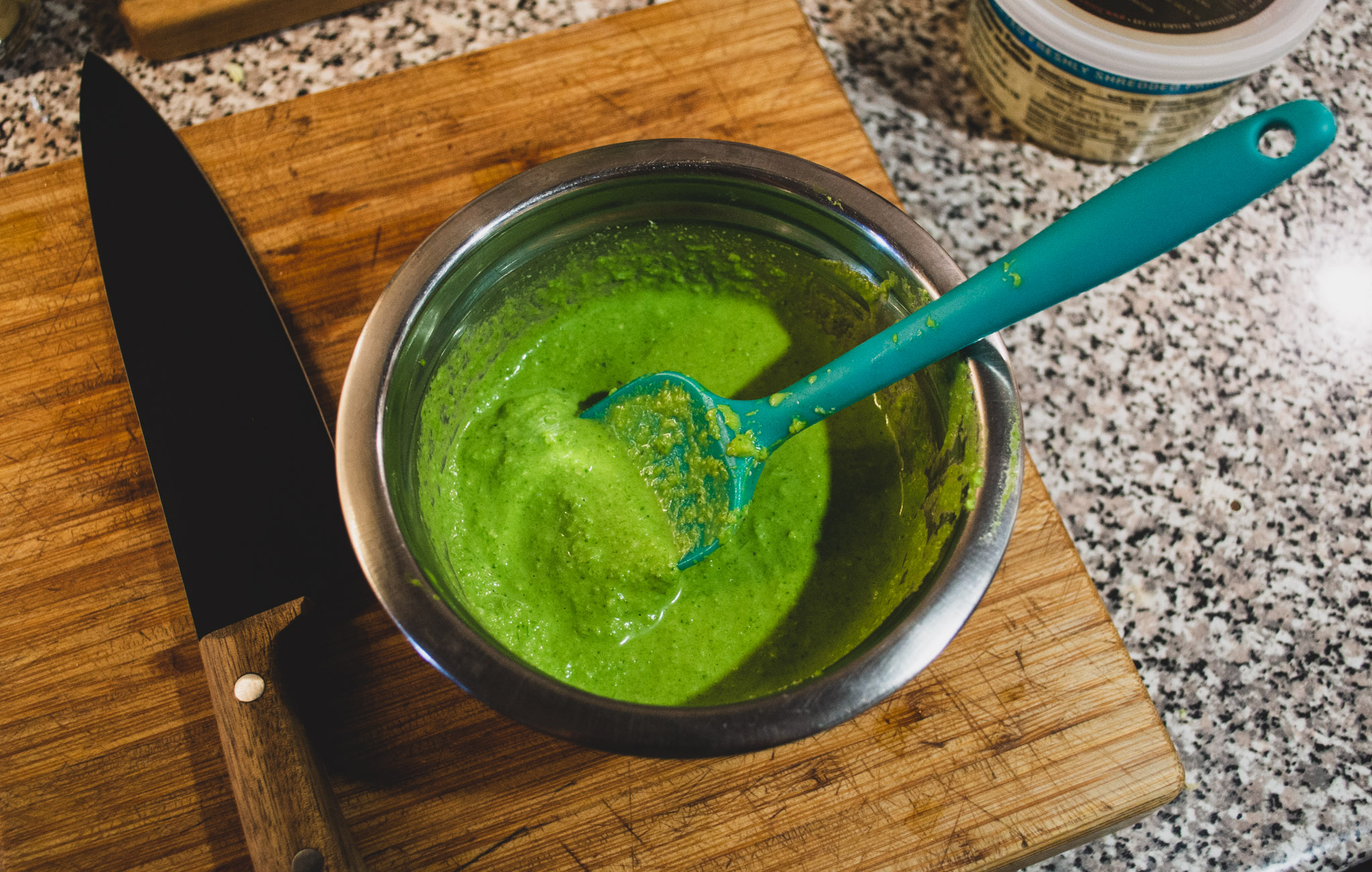Final Cooking Fantasy
Pesto
Pine nuts are the original nut to use, but they are costly. I liked the combo of Almond and Cashew, but you can use anything really, pumpkin seeds, peanuts, whatever you prefer.
I would maybe even use less than half if using Garlic Cloves. Scapes are very mild in comparison.
I find a lot of Pestos I come across are much thinner. I typically see a pool of oil encasing a shredded mass of basil and herbs. I’m sure there is a reason for this, but I still to prefer to keep mine more of a paste. I find it works just nicely with pasta and that’s really the only way I eat it. If I needed to thin it out then I would probably do so with a mixture of Oil and Lemon Juice.
The name is the past participle of the Genoese verb pestâ (Italian: pestare), which means “to pound”, “to crush”, in reference to the original method of preparation: according to tradition, the ingredients are “crushed” or ground in a marble mortar through a circular motion of a wooden pestle. This same Latin root, through Old French, also gave rise to the English noun pestle.[3] Incidentally, the Latin root seems to be similar to the sanskrit adjective pishta (Sanskrit: पिष्ट, IAST: piṣṭa), which means to “ground”, “pounded”, “crushed”.[4] Strictly speaking, pesto is a generic term for anything that is made by pounding; that is why the word is used for several pestos in Italy. Nonetheless, pesto alla genovese (“Genoese pesto”) remains the most popular pesto in Italy and the rest of the world. - Wikipedia
- 1/2 cup roughly chopped Garlic Scapes (half this if using Garlic Cloves)
- 2 cups loosely packed Basil leaves
- 1 good pinch Salt
- 2 tbsps Almonds
- 2 tbsps Cashews
- 2 tbsps Parmesean Cheese
- 4 tbsps Olive Oil
- 5 1/2 tbsps Water
- First bring a pot of water to a boil. Add in your Garlic and Basil, bring back to a boil if needed then let cook for 30 secs.
- Remove Basil and Garlic and place into a bowl of cold water.
- Drain and lightly squeeze your Basil and Garlic to remove excess moisture, be gentle.
- Place your Garlic and Basil into your blender and add 4 tbsps of your Water and 2 tbsps of your Oil.
- Give it a good blend, like nice and mixed.
- Now add in your Cashews, Almonds, Cheese and remaining 2 tbsps of Oil.
- You guessed it, blend away until it's a nice paste. You could go with whatever consitency you want, but I prefer a paste, it works well for when I make pasta and you can always thin it out later with a liquid if needed.
- Dump your contents into a bowl then add about 1 and 1/2 tbsps of Water into your blender and shake it around to get all that pesto goodness off the side and mix that into your bowl as well.
- Done.
